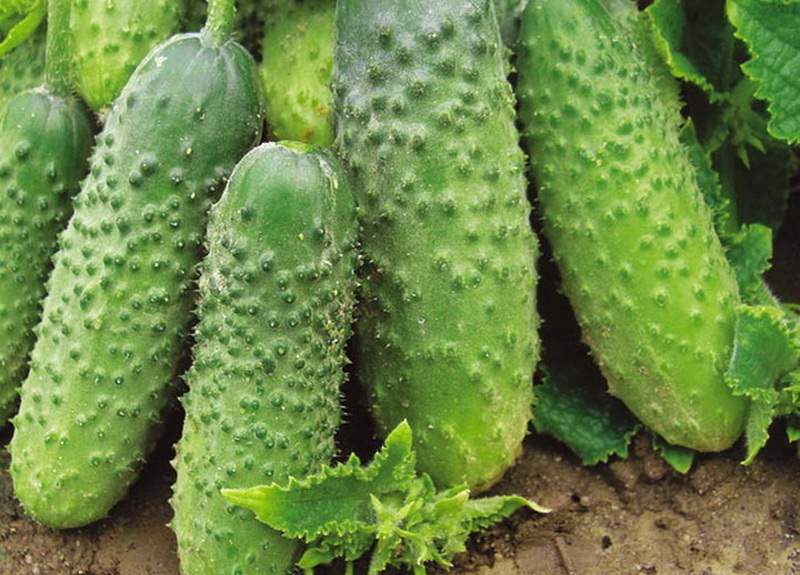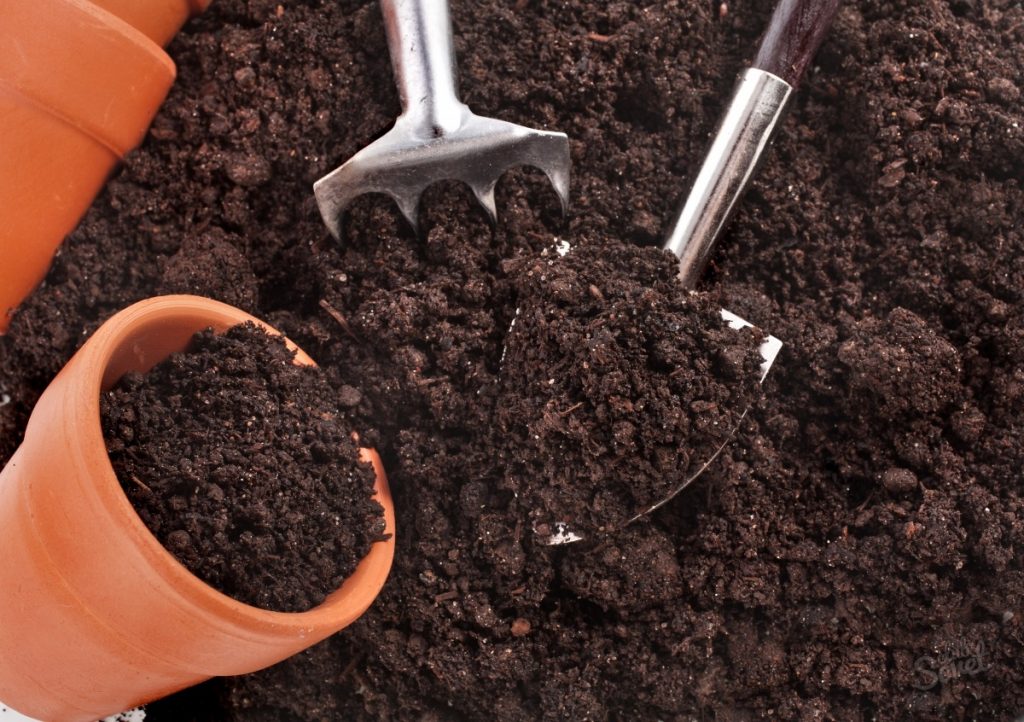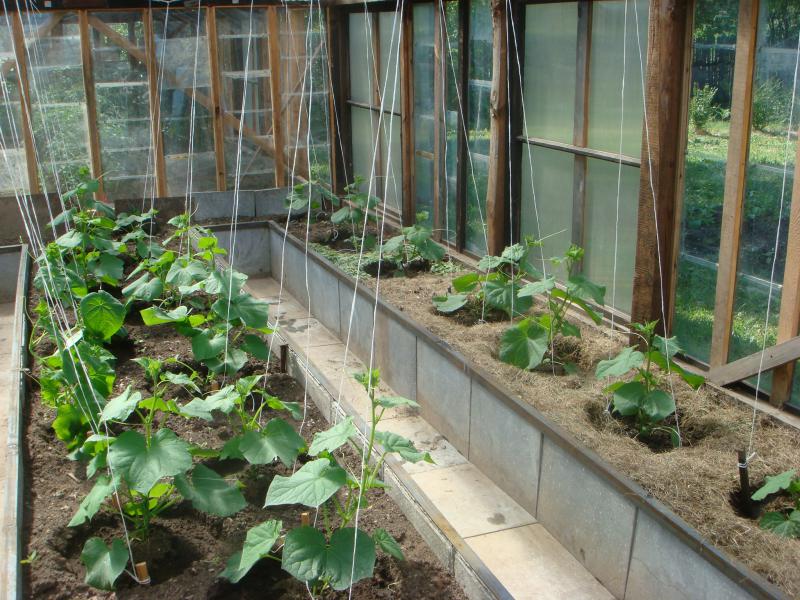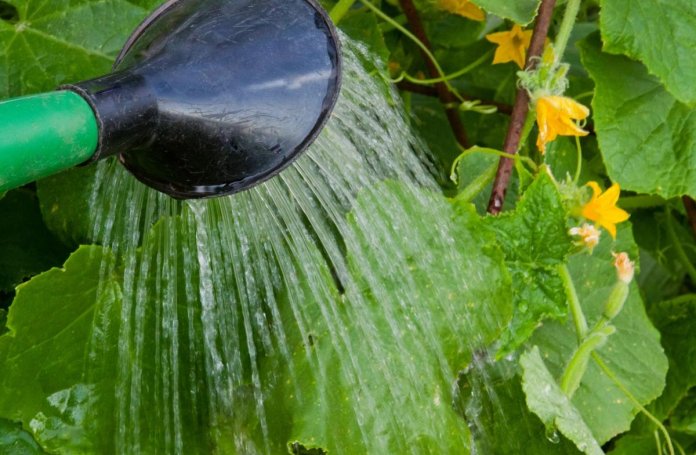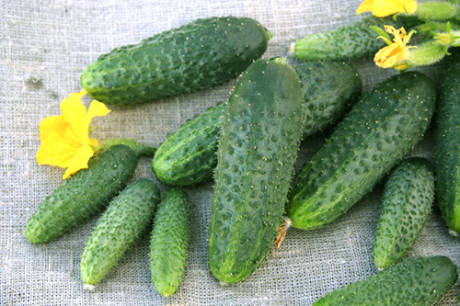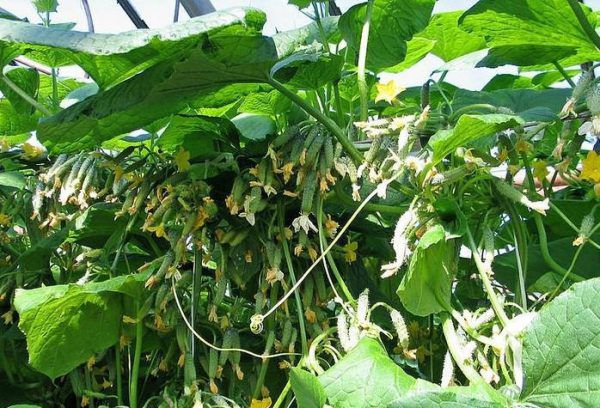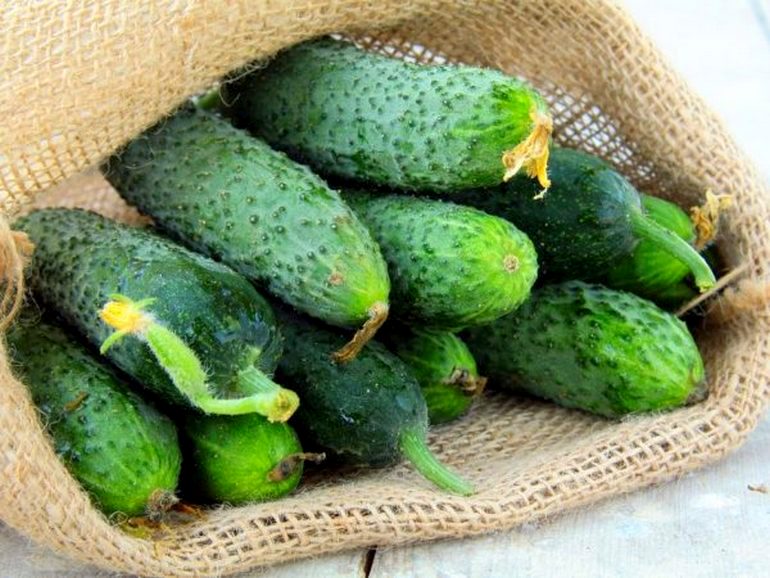Content:
Cucumber is the most common pumpkin family vegetable garden. On the plots, it occupies a special place, but it gives good yields only with proper care. This plant much more than others loves high humidity and abundant watering. The explanation for this is simple - it is native to the tropical and subtropical regions of India, where it is still found in the wild.
It is interesting to note that this is 30 times more than the second cucumber country in the world, Russia, grows (about two million tons). The ten largest producers of cucumbers in descending order also include Turkey, Iran, Ukraine, Uzbekistan, Mexico, USA, Spain and Japan.
Goosebump F1: characteristics and description of the variety
The variety was obtained by breeders of the Gavrish firm, well-known in our country and abroad. The hybrid is popular with summer residents due to its early ripening period. The first zelents can be obtained as early as 43-48 days from full shoots. In this regard, it is excellent for early harvests, and is also popular with gardeners in the northern regions of the country, where the warm season lasts a few months.
Murashka cucumber is not only early maturing, but also high-yielding. This variety of cucumber is suitable for growing not only in open ground, but also in greenhouses, as well as under film shelters.
The variety is medium-weight, in each bosom several cucumbers are formed (from 4 to 6 pieces). The fruits are not large, neat, have a presentation. Their color is juicy green, the length of the fruits is on average from 10 to 15 centimeters, and the weight is about 100 g. The fruits of this variety have black spiny thorns.
With good care, you can collect up to 12 kg of sweet and aromatic cucumbers from one square meter, which, among other things, do not have bitterness.
Cucumbers of the Murashka variety can be used for different purposes, they are universal. Due to its size, it is best suited for pickling and canning. But in fresh salads, it is better to replace it with other varieties if possible.
The subtleties of agricultural technology for cucumber varieties
Cucumber is a less thermophilic crop than, for example, tomatoes, eggplants or peppers. However, he also needs a certain amount of heat and sun, without which it will grow poorly, develop and eventually give a small harvest.
The beds or a place in the greenhouse for these plants must be prepared in the fall. We should not forget about crop rotation: it is best to plant cucumbers after crops belonging to the Solanaceae family (tomatoes, eggplants, potatoes, peppers); good yields can also be obtained after onions and all types of cabbage. But after pumpkin cucumbers it is better not to plant - they have the same diseases.
In the process of preparing the soil, it is dug up, stones, weeds and their roots are removed. Then it needs to be enriched - for each square meter, 15 kg of compost or good humus should be added. You also need minerals - 25 g of urea, phosphorus and potassium fertilizers per square meter. After that, it is recommended to water the beds with hot water and cover with foil until spring.You need to remove the covering material a week before planting the plants, and then loosen the soil.
If the soil is not neutral, this is easy to fix. During digging, add 3-4 tablespoons of dolomite flour and wood ash for each square meter. You can also add powdered egg shells (200 g per 1 square meter) to the ground.
It is possible to grow a cucumber of the Murashka variety both by direct sowing in the beds, and through seedlings. The latter method is most often used to obtain an early harvest in the northern regions of the country. For this, seeds are sown in a 0.5 liter container in the first decade of May. It is better to use the soil as a universal or special soil for the Pumpkin family. Seedlings usually appear in 5-7 days.
After emergence, they need to provide a comfortable temperature - from 20 to 25 °. The seedlings are grown for about a month and planted in greenhouses or outdoors in early June. At this time, young plants should have about three true leaves. And the first fruits when planting in this way can be obtained within two weeks after transferring to a permanent place.
Some people plant the gooseberry cucumber variety in open ground immediately with seeds. However, it often happens that the seeds germinate for a long time and then grow slowly. As a result, the fruiting period is shifted. The reason is simple - the seeds were sown too early. Experts recommend sowing cucumbers when the soil has warmed up to a temperature of + 18-23 °.
For faster and more friendly seedlings, the seeds should be sorted, warmed up, and then soaked. Sprouted seeds will sprout in just a couple of days. Another plus of germination is that later you will not have to sow cucumbers in places where seedlings have not appeared.
During planting, close attention should also be paid to the seeding depth. On light soils, the planting depth of seeds should be about 5-6 cm, and on heavier and more dense soils - only 3, maximum - 4 centimeters.
During the entire growing season, cucumbers need special care. It is uncomplicated and comes down mainly to watering, feeding and weeding.
Watering
Water the plants with extremely warm water. It is best to use rainwater, it is considered the most useful for plants, but if it is not available, you can do with other water. Before watering, you need to warm it up a little, for example, put it in the sun.
If the weather is dry, it is worth watering every other day. Watering rate per square meter is 2 buckets of water.
Fertilizer
As soon as 2-3 true leaves appear on the bushes, the first feeding should be given. It should be organic. An infusion of chicken manure or mullein is suitable.
After 10-14 days, the plants are given a second feeding. The same mullein or bird droppings will work, but it is recommended to add 1 tbsp to each bucket. l. nitroammophoska or superphosphate. But for the third time, cucumbers are fed with an infusion of ash or special fertilizers for Pumpkin, which must contain potassium.
Formation
This type of cucumber needs to be pinched. Pinching is done after 5 or 6 leaves appear. As a result, the plant gives off side shoots, which also need to be normalized, leaving no more than 40 centimeters in length. Thanks to these operations, the bushes acquire the correct shape, do not waste energy on the development of extra shoots and give a higher yield.
Diseases
The cucumber of the Murashka variety is quite resistant to disease.It resists powdery mildew, downy mildew and olive spot well. However, if they are damaged, the planting must be treated with special preparations. After that, it quickly recovers, continues to grow and bear fruit. By the way, you can pick cucumbers until the very frost, since the plants do not turn yellow for a long time and dry, unlike other varieties and hybrids.
Pros of Goosebump cucumber
Perhaps the most important advantage of this variety is its high yield. Most of the flowers of the gooseberry cucumber are female. As a result, the plants completely lack barren flowers, which are often found on other varieties and hybrids. They grow well both in greenhouses and in open beds.
Zelentsy of this variety have a beautiful shape, they are convenient in canning, they are quite well transported over long distances. The fruits have a pleasant sweetish taste, they are juicy, contain few seeds and have no bitterness.
But the cucumber also has its drawbacks. With poor care, the plants give a small yield, however, like many other varieties and hybrids of this irreplaceable crop.
